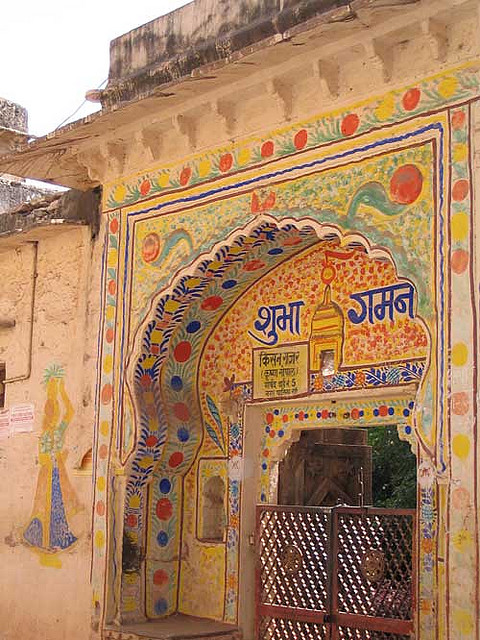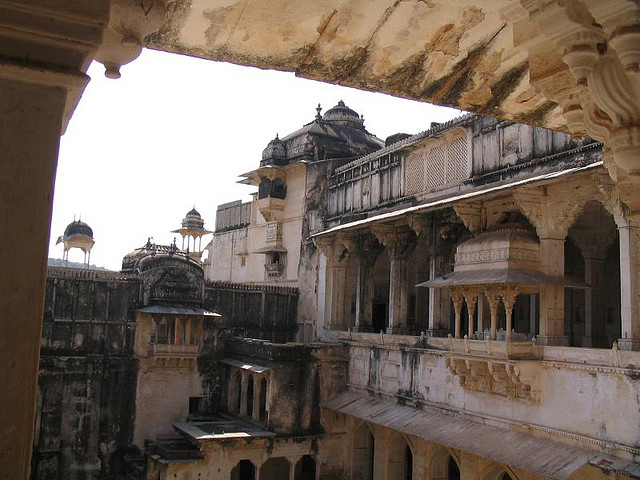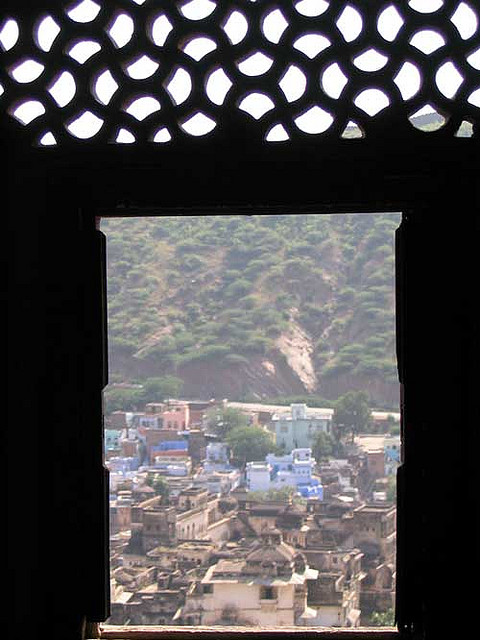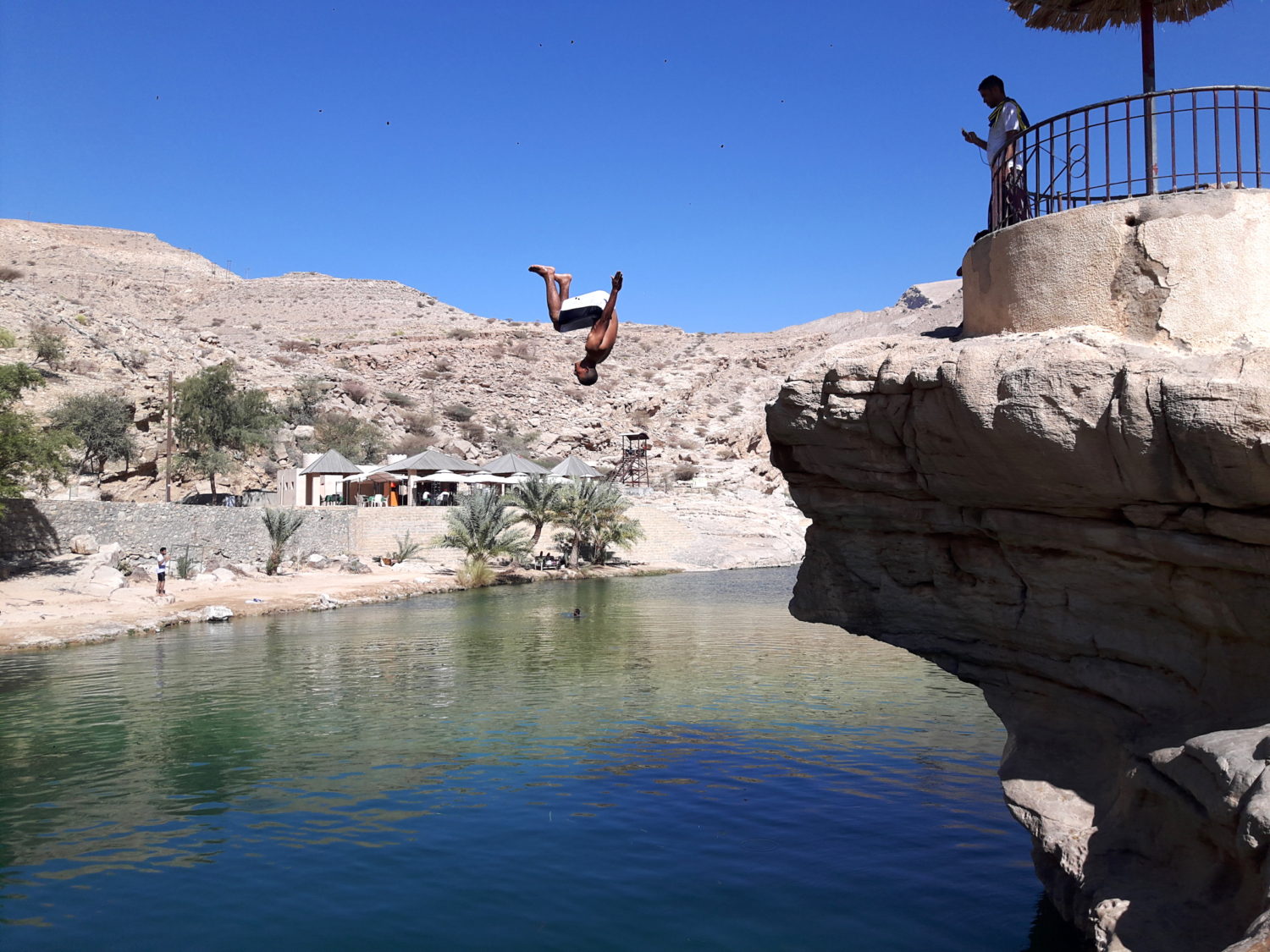The petite Indian city of Bundi has played muse to artists – most famously, writer Rudyard Kipling, photographer Virginia Fass and poet Rabindranath Tagore – but it has managed to deflect the prying eyes of the tour groups and backpackers. They have come, seen and conquered the rest of Rajasthan – pink Jaipur, blue Jodhpur and golden Jaisalmer – but overlook sandy, brown Bundi, despite its palaces and great fortress.
Perhaps for that reason the town’s rough charm remains undiminished. Tucked into a valley at the foot of the Aravalli mountain range, Bundi, which dates back to the 12th century, remains a figurative crevice in the folds of time.


Water is the most precious commodity in this desert town but is easily shared; young and old alike sit on the roads ladling out cool drinking water to passers-by.
Bundi has more than 50 ancient stepwells, called baoli, which served not just as reservoirs but also as social hubs for the women of the palace – places to meet, bathe, chat and catch up on news. Most have fallen into disrepair but even today women meet at the common wells to gossip as they draw water, before walking the narrow streets, delicately balancing pots on their heads.
The most famous stepwell is Raniji ki Baoli, the queen’s well. The gate is locked and the watchman is asleep under a tree when we arrive just after noon. He slowly comes around as we shake him awake, his breath reeking of alcohol. He informs us that visitors are no longer allowed to see the baoli and that the gate will remain locked, and would we mind going away so he can sleep in peace.
Built in 1699 by Rani Nathavatji, this 46-metre-deep baoli is one of the largest in the area. It is said to have served as a private swimming pool for the royal ladies, a fact illustrated by exquisite arches and delicate carvings that seem too elaborate for commoners. But today, the stepwell, which was once said to hold enough water for the entire kingdom, is dry. Even without water (and even when seen through locked gates), Raniji ki Baoli presents a pretty sight, complemented by flocks of pigeons taking flight from their perches above the columns on hearing our voices.

There’s little doubt that Kipling – the Mowgli man, as he is referred to here – is Bundi’s favourite son.
Referring to Bundi’s Garh Palace, he wrote: ‘To give on paper any adequate idea of the Boondi-ki-Mahal is impos- sible. Jeypore Palace may be called the Versailles of India; Udaipur’s House of State is dwarfed by the hills round it and the spread of the Pichola Lake; Jodhpur’s House of Strife, grey towers on red rock, is the work of giants, but the Palace of Boondi, even in broad daylight, is such a palace as men build for themselves in uneasy dreams – the work of goblins rather than of men.’
The words, from Kipling’s From Sea to Sea and Other Sketches, Letters of Travel, are repeated on the signboard of the palace.

The steep, cobbled path leading up to the complex must have been rough once upon a time, but has been trampled into a resigned smoothness over the centuries by the feet of elephants and soldiers. Indeed, the tall, arched entrance is named Hathi Pol, the gate of the elephant.
Inside the palace, there is a stunning silence and our voices and footsteps echo through the empty chambers. Through the broken stained-glass windows, sunlight filters into the rooms, throwing out technicolour shadows on the dusty floor. Only a part of the palace is open to visitors, with the rest locked and largely ignored by the royal family.

There are several smaller palaces built by various kings strewn across the grounds; Chhatra Mahal, Phool Mahal and Badal Mahal, in particular, are home to fine murals. The most captivating of all is Chitrashala, the chamber of paintings. The walls and columns are covered in scenes from Indian mythology, the gods and goddesses in their more playful moments. There are also a number of works on the splendours of the Bundi kingdom, snippets of court life, animals and birds of the region, hunting scenes, local festivals. Blues, aquamarines and turquoises dominate – perhaps a reference to a romance with water in this parched desert land.

However, it’s not Garh Palace that first greets the visitor to Bundi; it’s Taragarh Fort, or the star fort, described by Kipling as ‘an avalanche of masonry ready to rush down and block the gorge’.
We scramble up the thorny path to the fort – or what remains of it. Built in the mid-14th century and named after its distinctive shape, it was renowned for its labyrinth of tunnels. Standing on the battlements – isolated on top of a hill, overlooking the town on one side and the roads leading in and out of Bundi on the other – it is easy to understand why this city was never captured. However, time has managed to do what invaders could not. The fort’s impenetrable walls have crumbled in large parts while the palace exudes a sense of abandonment, as if all the people left in a hurry. Several massive cannons sit rusting and the fort’s stepwells, built to supply residents in times of crisis, are mostly dry.
As we wander through the ruins, there are no other people present, just langur monkeys and pigeons. And as we make our way through the dry, overgrown shrubs surrounding the fort, down the path towards the town, I can faintly hear Kipling’s goblins laughing in the distance, as they scamper back to their secret hideouts in the tunnels.
In this place and at this time, it is easy to believe they are there.
Getting there: Jet Airways (www.jetairways.com) flies from Hong Kong to Delhi, and from there to Jaipur. Hire a cab from the airport to Bundi, which will take about four hours. Alternatively, take the Rajdhani Express from Mumbai or Delhi and get off at Kota, 40 kilometres away.
***
Published in the South China Morning Post, August 21 – read the full Bundi travel story here – Living the dreams…





Bundi is such a pretty place… especially when there’s water in the lake below City Palace. For any one travelling to Bundi, look up Mr Bhati – he’s a local guide who knows everything about Bundi and can show you the City Palace, Taragarh Fort and Kshar Bagh Cenotaphs.
Can’t wait to be back there next month!